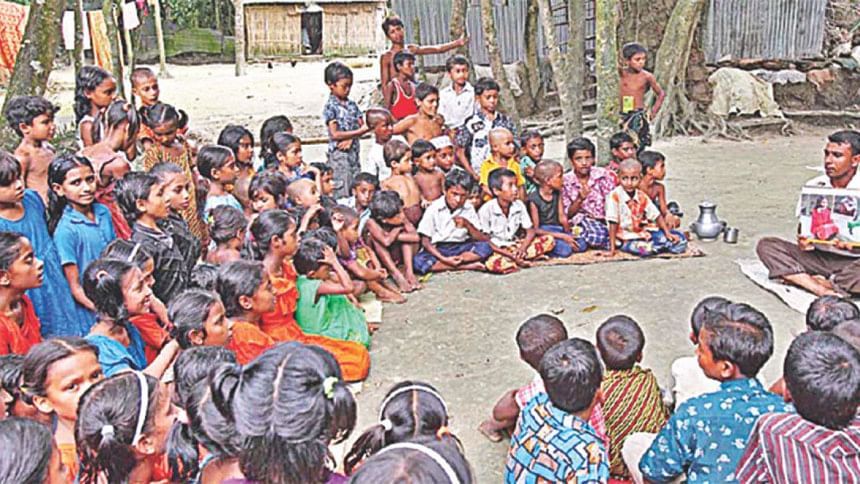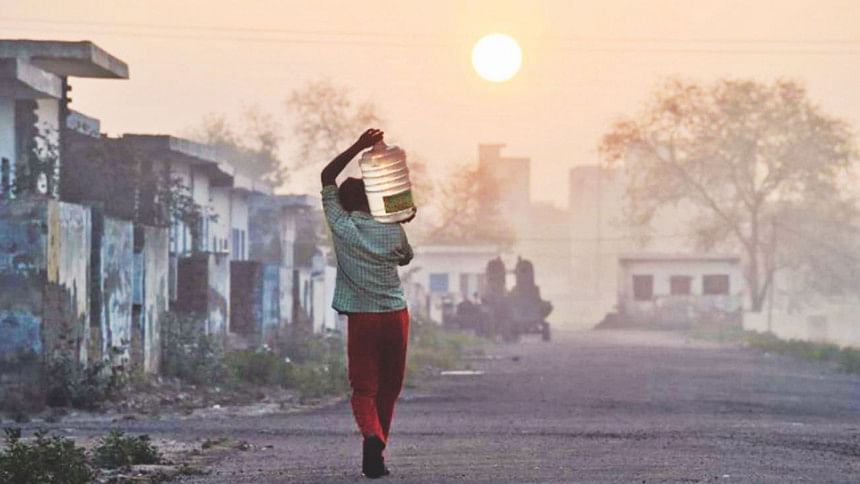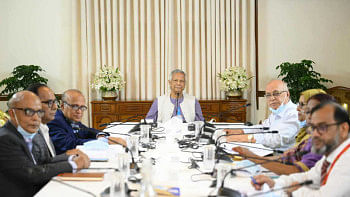Journey to zero

Bangladesh emerged as a proud independent country after nine months of bloody war in 1971. The ravages of the war had left the country's economy and infrastructure in tatters, and even basic services such as water supply and sanitation were severely damaged. Jumping forward two decades, growing industrialisation and socioeconomic progress had yet to reach many parts of the country and population groups, and over a third of the population were still defecating in the open in 1990 compromising health and human dignity.
On 30th June 2015, the World Health Organisation (WHO) and UNICEF jointly declared open defecation in Bangladesh to be at 1% in their Joint Monitoring Progress (JMP) report. What had seemed impossible even at the turn of the millennium had become reality in an astonishingly short span of time. No one could have predicted this remarkable decline in open defecation in Bangladesh even at the birth of the Millennium Development Goals, but a strong national push has brought us nearly to the end of the journey to zero open defecation.
Bangladesh's progress in sanitation comes in the context of wider accomplishments that perpetuate the 'Bangladesh paradox'. Despite a per capita GDP less than India or Pakistan and a higher rate of poverty than many other countries in the region, Bangladesh has performed exceptionally well across a number of human development indicators. We have already met several MDG targets including reducing headcount poverty and poverty gap ratio, and attaining gender parity in primary and secondary education. In almost every index of health, we have seen impressive progress over the last two decades, including in reducing the prevalence of underweight children, lowering the infant mortality rate and maternal mortality ratio, improving immunisation coverage and reducing the incidence of communicable diseases. These successes are owed in part to the improvements in water, sanitation and hygiene behaviour that have taken place in the last few decades. A quick glance at the numbers on child mortality shows, how the rise in improved sanitation contributed to its drop from 50% in 1990 to 8% today as the spread of diarrhoea, once the number one killer of children, slowed. The journey towards zero open defecation is integral to Bangladesh's development success story, and one that needs to be better understood to prepare for upcoming challenges.

There is widespread interest in Bangladesh's experience in reducing open defecation and the reasons behind this phenomenon, particularly as neighbouring India launches its ambitious Swachh Bharat Abhiyan. However, as the saying goes - “success has many parents”. Filling in this critical gap, we now have an objective, analytical account of the factors behind Bangladesh's success in sanitation from studies commissioned by the National Sanitation Secretariat of the Ministry of Local Government in 2015, supported by UNICEF and WaterAid. This research tells us that first and foremost, high level political commitment with consistent, committed and dedicated efforts from the government,
backed by clear policy guidance, provided the impetus needed to make sanitation a priority issue.
Another reason behind rapid progress is that at the tipping point of the new millennium, sanitation initiatives shifted from supply side-driven projects to a people-cantered approach. High level policy directives were translated into effective action in many places through the Community Led Total Sanitation (CLTS) methodology, which focused on igniting the community as agents of change. As different organisations began to work on sanitation with communities, adaptations were made to the original approach, but the essential spirit of grassroots leadership and collective action remained true in each case. Participatory, community-led efforts led to village after village being declared open defecation free as a national social movement took hold. This was supported by the strong role of local government institutions (LGIs), which from the district level down to the Union Parishads monitored the sanitation situation in their constituencies, and strove to earn the coveted '100% open defecation free' accolade. At the national level, the Ministry of Local Government collaborated with academics, civil society and the private sector for shared and harmonious decision-making, a key ingredient of success that is often overlooked.
Alongside national efforts led by the government and LGIs, a vital role was played by bilateral and multilateral development partners. Large scale programmes supported by bilateral and multilateral partners such as Danida, DFID, the Dutch government, UNICEF, SIDA and SDC, reached millions of people across the country with sustained support over many years. Finally, technological progress kept pace with social mobilisation, with community-led innovations driving the development of feasible and cost-effective sanitation options.
Each of these contributing factors played out against a backdrop of broader developments that had their own roles in the overall success. In particular, Bangladesh's drive towards female education through stipend programs, and participation of women in microfinance, and the growing economic and social empowerment of women more generally, led women to act on an issue closely connected to their sense of dignity. Defecation in open is a gross compromise in dignity. Consistent decline in poverty, widespread economic growth, improved communications and household infrastructure, and the ubiquitous mobile phone, led to a rising sense of aspiration amongst people as toilets became a symbol not of affluence, but necessity.
The combination of top-down and bottom-up approaches, in concurrence with technological advances, external support, and wider economic and social progress, created the grounds for our success today. However, as we graduate to a middle-income country and face a new development era with the Sustainable Development Goals (SDGs), we must respond to emerging challenges and new threats. The flip side of success is the rapid and unplanned construction of latrines in many parts of the country, resulting in second generation issues of faecal sludge management. The proportion of unimproved and unhygienic latrines is high in Bangladesh, and we lag behind many countries in the region in hygiene behaviour. Despite Bangladesh's high population density and rapid urbanisation, public sanitation is in a woeful state, with even the capital city having only 69 public toilets to serve 5.5 million commuters.
Further challenges are presented by rising inequity within Bangladesh. People living in hard-to-reach rural areas and densely populated urban slums are marginalised by inequitable WASH budgeting that favours the well-off in urban centres. At the individual level, women and girls, persons with disabilities, children, the elderly and those with chronic illnesses are often left behind, even as their communities advance.
Finally, as SDG 6 capture to a great extent, we are no longer in a world where WASH is a matter of providing access to taps and toilets. It is imperative that we go beyond building latrines to climbing up the sanitation ladder, with long-term support and shared investment involving government ministries, development partners, civil society, the private sector and communities.
As we step into 2016, we have much to celebrate as a thriving nation, defying multiple odds to bring about truly transformative change. However, we must be wary of becoming complacent based on past successes. Water, sanitation and hygiene are interlinked issues with complex, multifaceted impacts on health, nutrition, ecosystems and populations. As the government and civil society go forward, they must address WASH as a much more integrated component of overall development, and one of central importance to achieving a number of the SDGs alongside SDG 6. Only then can we complete the longer journey—of which zero open defecation is only the beginning—reaching everyone, everywhere, always, with improved WASH.
The writer is a Public Health Professional and Country Representative, WaterAid Bangladesh.

 For all latest news, follow The Daily Star's Google News channel.
For all latest news, follow The Daily Star's Google News channel. 



Comments